Yulong Snow Mountain
Yulong Snow Mountain is a snowy mountain group in Lijiang City, Yunnan Province. It is located between longitude 100 4 2 100 16 30 and latitude 27 3 2 and 27 18 57 in the north of Lijiang. It is about 15 km north of Lijiang. It is the nearest equatorial snow-covered mountain range in the Northern Hemisphere. It is adjacent to Snow Mountain in Jiangxi and Zhongdian, East and Mianshan Mountain in the north. Sanjiang mouth extends south to 27 degrees north latitude, such as fans, facing the ancient city. The 13 peaks of the mountain are arranged longitudinally from south to north. The steepest and highest elevation of the main peak fan is 5,596 meters. It is covered with snow all the year round. There are temperate oceanic glaciers near the equator in Eurasia.
Jade Dragon Snow Mountain in the Naxi language is known as the "EU Lu", meaning the silver mountain rock. Its thirteen snow peaks are endless, just like a giant dragon flying over, so it is called "ERON". Because its lithology is mainly limestone and basalt, black and white, it is also known as "black and white snow mountain". It is the sacred mountain of Naxi people. It tells of the Naxi protector "more than 3" incarnation.
In 1984, Yunnan Jade Dragon Snow Mountain Provincial Nature Reserve was established. In 2001, Yulong Snow Mountain was rated as a 4A tourist attraction, and in May 2007 it became the first 5A tourist attraction in China.
Yulong Snow Mountain is located in Lijiang City, Yunnan Province, East Lijiang (Jiang) Ming (Yin) Highway, West Tiger Leaping Gorge Jianjian, South Yuhu, north to the Gap with Xiahu Tiger Leaping Gorge, east longitude 100 4 2 100 16 30, north latitude 27 3 2 27 18 57, snow line height between 4800 ~ 5000 meters.
Yulong Snow Mountain is located at the junction of Qinghai-Tibet and Yunnan-Guizhou plateaus, and at the junction of Hengduan Mountains in Northwest Yunnan and East Yunnan plateau. It is the main peak of Yunling Mountains in Hengduan Mountains and belongs to the young limestone fault-block fold mountain. Because of the uneven uplift of the earth's crust, the topography of high mountains, deep valleys and Intermountain basins is formed, which belongs to the cutting mountain canyon area of Hengduan Mountain System and the high mountain canyon sub-area of the northern section of Hengduan Mountain. Geological history is a part of the western Yunnan geosyncline, Paleozoic to Mesozoic has suffered several transgressions and regressions, Tertiary Himalayan orogeny continued to the Quaternary, Yulong Mountain was finally formed at this time.
The strata of Jade Dragon Snow Mountain belong to the Yunnan Yunnan stratigraphic area. It is mainly carbonate rocks from Middle Devonian to Middle Carboniferous, followed by Permian basalt with limestone and Triassic limestone with sandy shale. There are Carboniferous, two fold basalt and interbedded limestone and other metamorphic rocks in the southern part of the mountain. The southern part of Baisha village is mainly composed of three fold strata. Permian basalt and basalt metamorphic green schist and greenstone are found in Hutiao gorge and Jinshajiang River Valley on the West slope. Ice deposits and ice water deposits in Quaternary glaciation can be seen at Dongpo and Piedmont.
Yulong Snow Mountain is the southernmost modern monsoon-type glacier in Asia and Europe. According to the glacier catalogue published in 1994, Yulong Snow Mountain has 19 modern glaciers, 15 on the East slope, 4 on the West slope, with a total area of 11.6 square kilometers. Glacier No. 1 in Baishui is the largest glacier with a length of 2.7 kilometers and an area of 1.5 square meters. Kilometers, the balance line is about 4800 meters above sea level, and the terminal of the glacier is about 4200 meters above sea level.
Yulong Snow Mountain belongs to the south temperate plateau monsoon climate zone, with unique mountain monsoon characteristics. Because of the great difference between the valley and the top of the mountain and the vertical difference of climate, the mountain vertical climate zones from the valley to the top appear in turn, such as warm, warm, warm and cool north subtropical zone and cold and temperate zone.
Yulong Snow Mountain is located in the southeastern edge of the Qinghai-Tibet Plateau. It is located in the alternating control zone of westerly circulation, southwest monsoon and Southeast monsoon. The climate in this area has obvious difference between dry and wet seasons. Controlled by southwest monsoon and southeast monsoon, precipitation accounts for more than 90% of annual precipitation. From January to March of the following year, it was mainly controlled by the southern branch jet of the upper westerly circulation, with little precipitation and little glacier recharge. In April, the southern branch jet weakened, and the humid and hot southwest monsoon entered the area northward, and the wet season began.
According to the data of Lijiang Meteorological Station (17 km away from Yulong Snow Mountain), the annual precipitation in this area is 935 mm, and the rainy season is June to October. The precipitation in these five months is more than 90% of the annual precipitation, and the dry season is from November to May next year, with less precipitation. The annual average temperature is 12.79 degrees Celsius, the hottest month is July, the monthly mean temperature is 17.9 degrees Celsius, the most cold month is January, and the monthly mean temperature is 5.9 degrees. On the whole, the temperature changes are not dramatic, the seasons are mild and no summer.
Yulong Snow Mountain is affected by the southwest monsoon. The base level of Lijiang Basin (2415.9 meters above sea level) is a south temperate climate. The climate is characterized by dry and wet seasons, short summer temperature, sufficient sunshine in winter and spring, average annual sunshine hours of 2530 hours, and high radiation. Because of the great difference in height between the valley and the top of the mountain, the climate varies greatly vertically. For every 100 meters of elevation rise, the average temperature increases by 0.86 C. From the valley to the top of the mountain, the mountain vertical climatic zones of warmth, warmth and humidity, warmth and cooling, North subtropics and cold and temperature appear in turn.
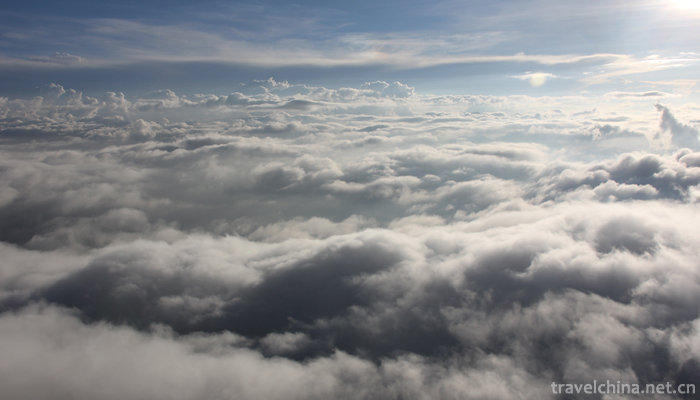
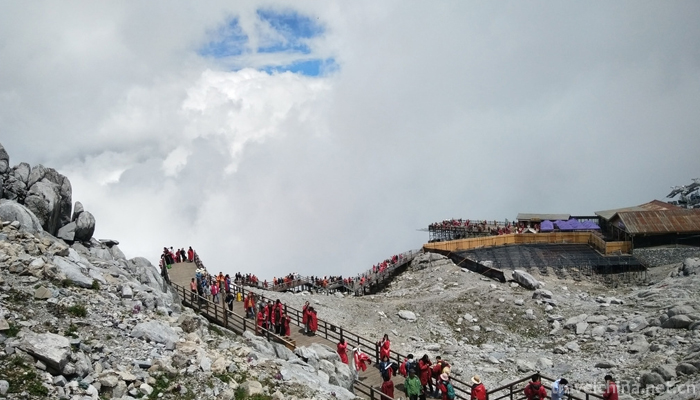
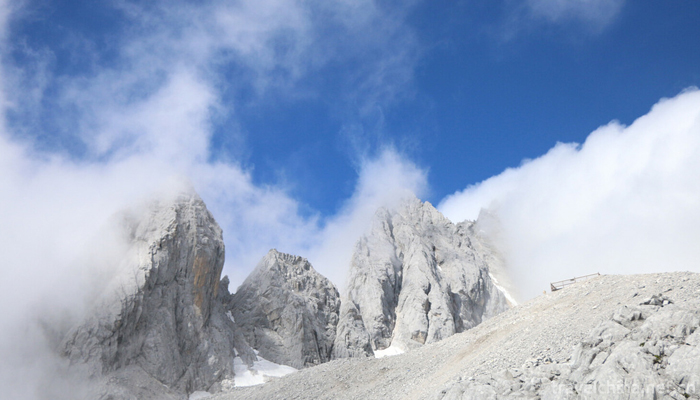
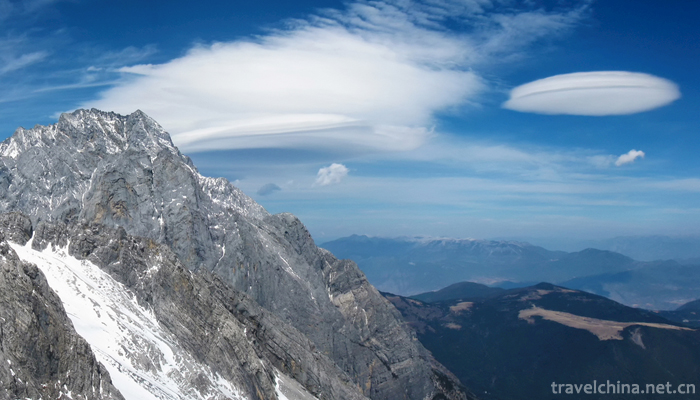
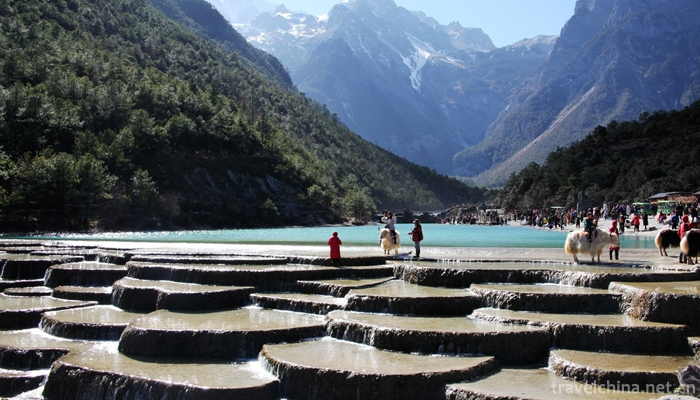
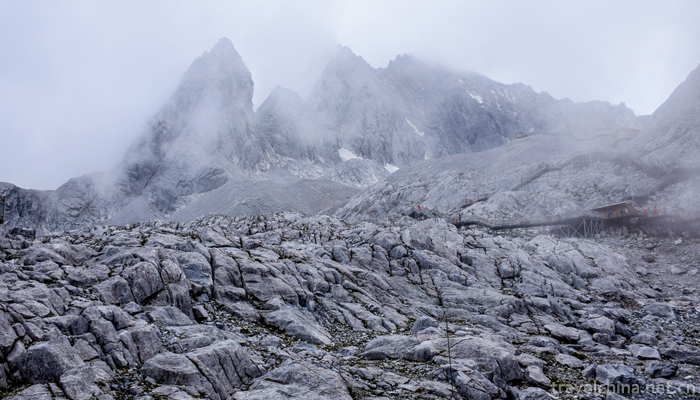
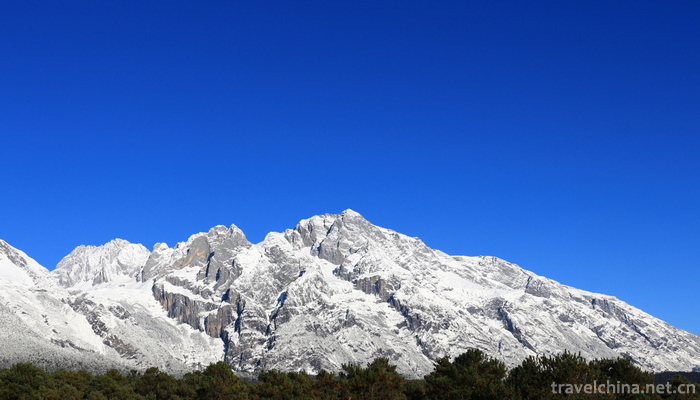
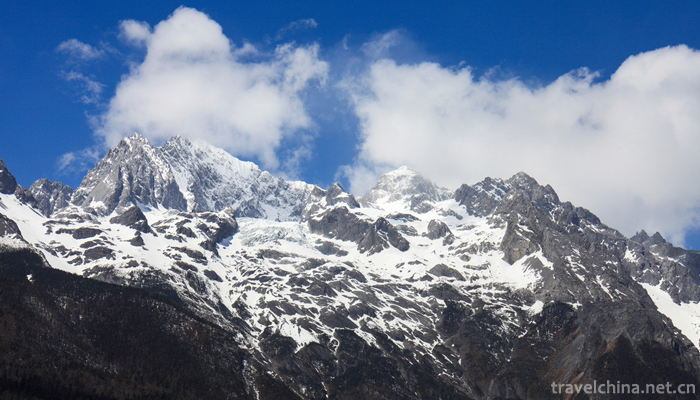
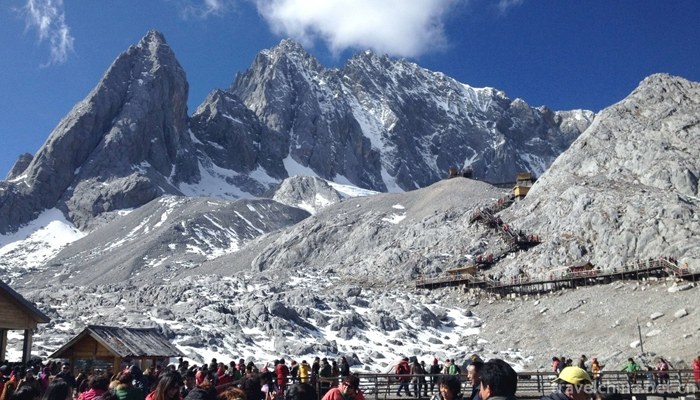

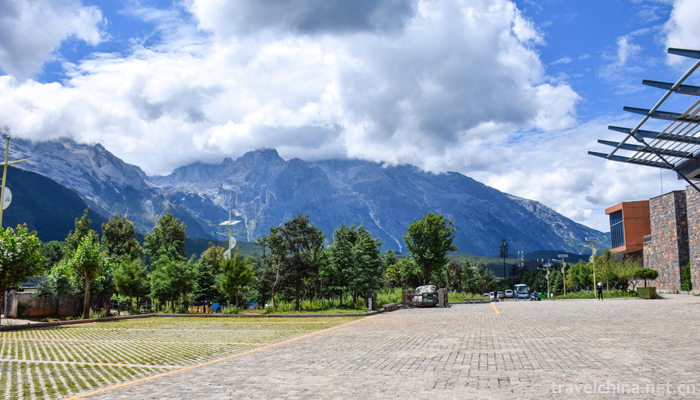
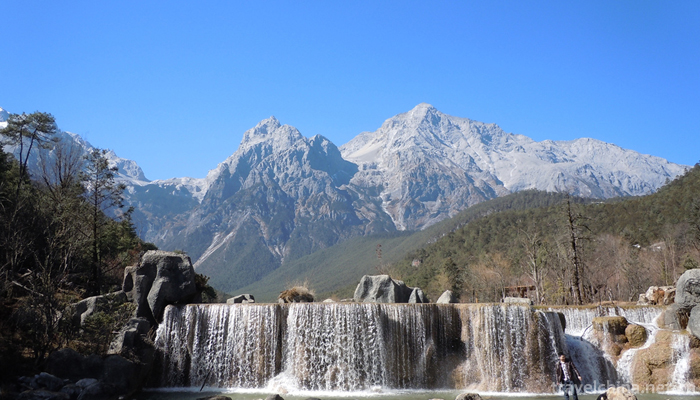
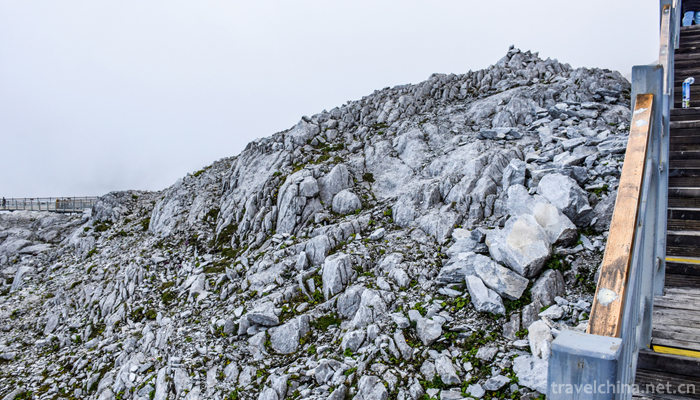
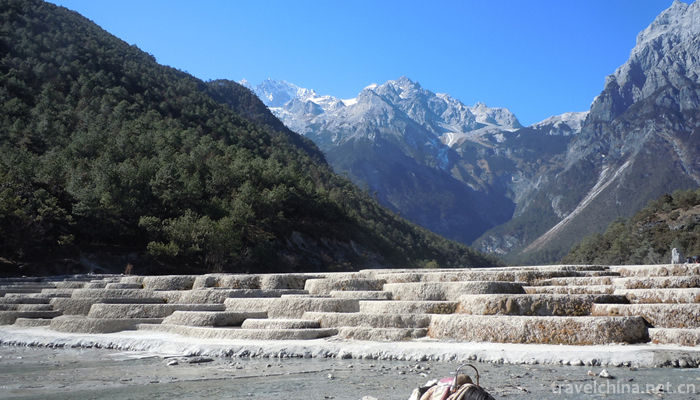
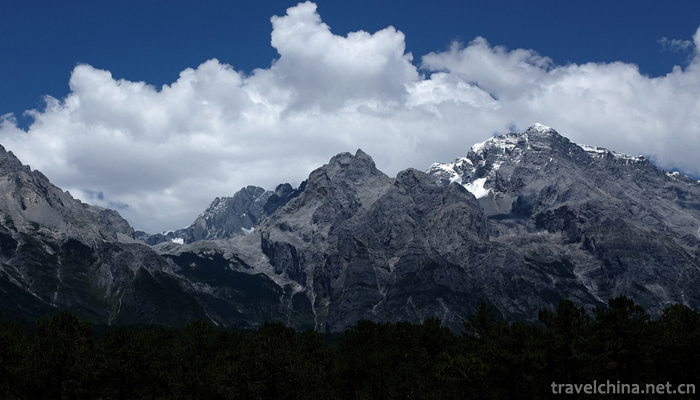
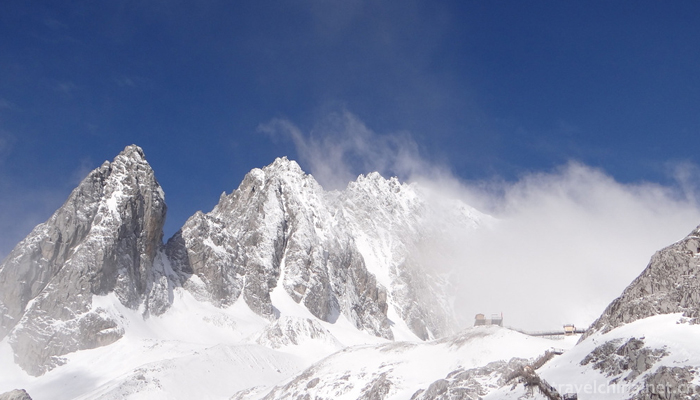
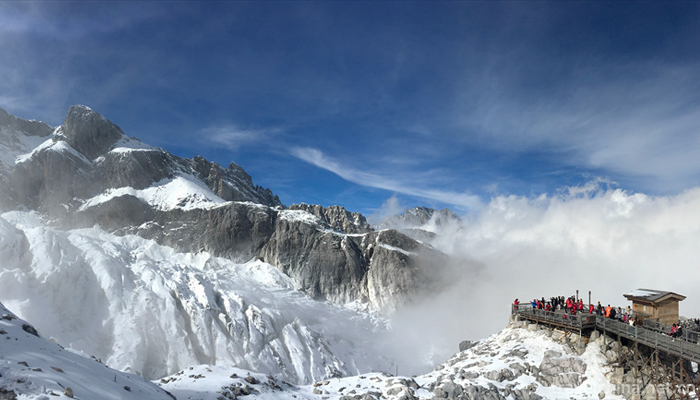
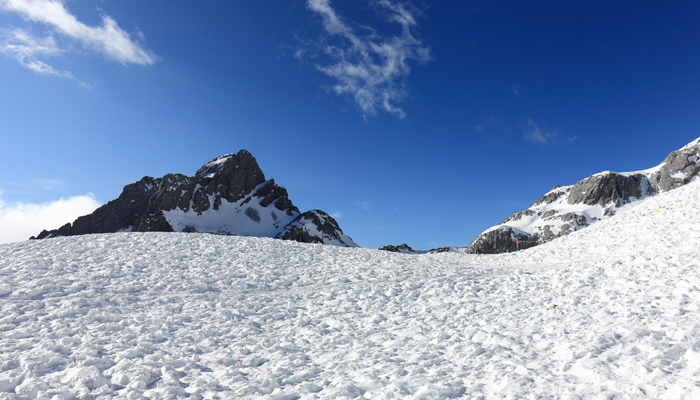
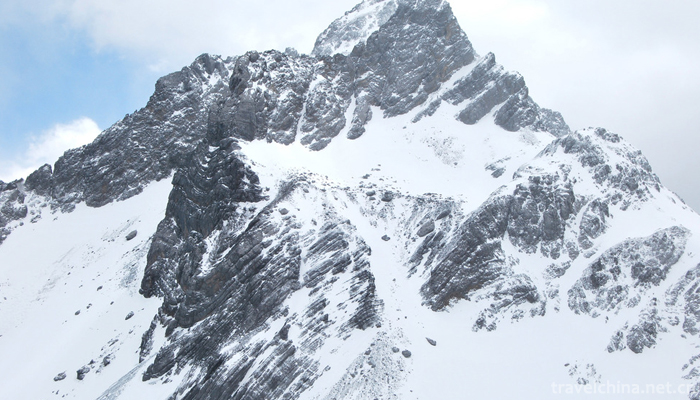
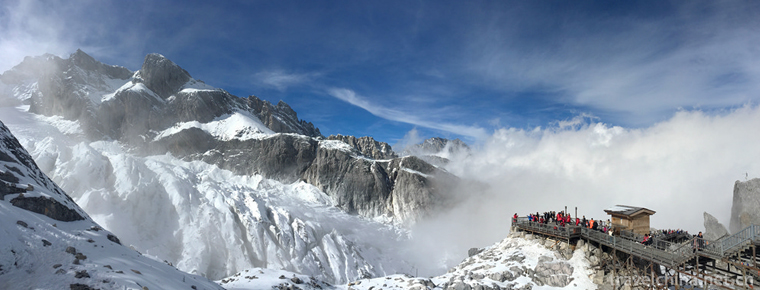
-
1.Rabbit head
Rabbit head is a traditional snack in Sichuan Chengdu, Shanxi Datong and Zhejiang Quzhou.
Time 2018-10-13 -
2.Mount Jiuhua Scenic Area
Jiuhua Mountain Scenic Spot is located in Anhui Province, China. The northwest is across the Yangtze River and Tianzhu Mountain, and the Southeast
Time 2018-12-08 -
3.Huashan pictographs
Huashan rock paintings are located in the Zuojiang River and its tributary Mingjiang River valley of Chongzuo City, Guangxi (covering Ningming County, Longzhou County, Jiangzhou District and Fusui Cou
Time 2019-01-17 -
4.Shanghe Garden Scenic Spot in Qingming Dynasty
Qingming Shanghe Garden is a large-scale theme park of Song Dynasty cultural scenery constructed by the people's government of Kaifeng City in Henan Province
Time 2019-02-07 -
5.Xishuangbanna Tropical Flower Garden
Xishuangbanna Tropical Flower Garden is located in Yunnan Institute of Tropical Crop Sciences, Jinghong City, Xishuangbanna Prefecture, Yunnan Province. It covers an area of 80 hectares and is one of
Time 2019-02-25 -
6.Dong Pipa Song
Dong Pipa song is distributed in the southern dialect area of Dong nationality, which can be divided into lyric and narrative Pipa song. Its singing content almost covers Dong history
Time 2019-04-28 -
7.Western Qin Opera
Western Qin opera, also known as "chaotic play", is popular in Haifeng, Lufeng, Chaoshan, southern Fujian and Taiwan. Western Qin Opera flowed into Hailufeng in the northwest of the Ming Dyn
Time 2019-07-01 -
8.Zhangjiajie Yangxi Opera
Zhangjiajie Yangxi Opera originated in the middle of Qing Dynasty and has a history of more than 300 years. It belongs to Beilu Yangxi Opera. The singing feature is the singing method of "golden
Time 2019-07-16 -
9.China University of Mining and Technology
China University of Mining and Technology (China University of Mining and Technology), referred to as China Mining University, is located in Jiangsu province. Xuzhou City Yes
Time 2019-12-19 -
10.Longtouguan
Longtouguan, a cultural relic protection unit in Sichuan Province. Located in Jiangyang West Road, Jiangyang District, Luzhou City, Sichuan Province. Originally an ancient pass, it was built in the Shu Han Dynasty to build a wall for the earth; it was rebuilt in the 11th year of Chongzhen in the Ming Dynasty and rebuilt in the second year of Tongzhi in the Qing Dynasty.
Time 2020-10-16 -
11.Chongzhou Confucian Temple
One of the four best preserved Confucian temples in Sichuan Province. National key cultural relics protection units. Confucius Cultural Center in Western China. It is located in the south of Chongzhou painting pool.
Time 2020-11-05 -
12.cheongsam in the Republic of China
Since 1840, the western culture has been infiltrated into the local culture of the Qing Dynasty. Many coastal cities, especially Shanghai, have taken the lead in western culture because of the mixture of Chinese and foreign cultures, and their clothing has begun to undergo potential changes.
Time 2020-12-11